In a series of media interviews conducted before a Las Vegas fundraiser with presumptive GOP presidential nominee Mitt Romney, Donald Trump singlehandedly put the debunked birther movement back in the news. The resulting coverage is unlikely to change the outcome of the race, but it could help fuel the resurgence of false beliefs about President Obama’s birthplace.
Most observers thought the controversy was settled by the release of Obama’s long-form birth certificate in April. The dramatic event did initially reduce misperceptions that Obama was not born in this country, but much of the decline evaporated by January as memory of the birth certificate faded.
And Trump is not the only prominent figure to endorse birtherism. Indeed, a number of Republican elites continue to promote the myth. In this context, reporters face a difficult dilemma. These false and irresponsible statements are often deserving of journalistic scrutiny. However, research suggests that credulous reporting that legitimizes fringe beliefs and increases the familiarity of myths can inadvertently reenforce them. What’s the best way to strike a balance between these competing imperatives?
To illustrate the best and worst ways to handle this dilemma, I have annotated a series of article screenshots below with red boxes indicating repetitions of misinformation and green boxes indicating corrective information.
One sound approach was diagrammed by John Cook and Stephan Lewandowsky in their Debunking Handbook (see also the recommendations in the New America Foundation report I co-authored with Jason Reifler):
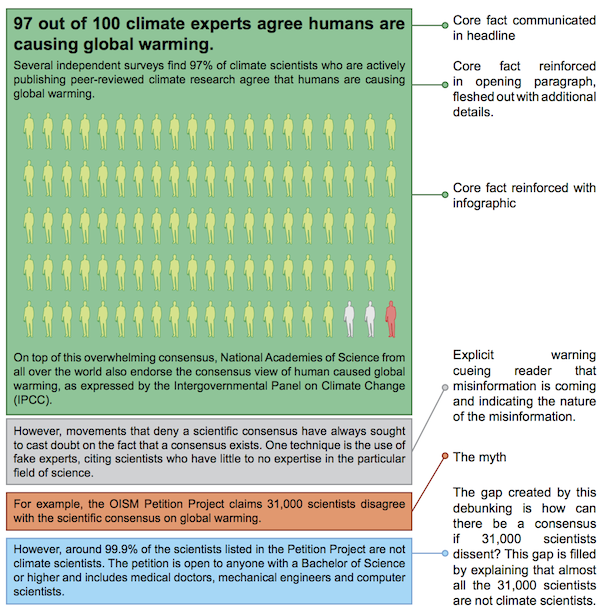
While this format is stylized and may not fully mesh with the inverted pyramid conventions of traditional news reporting, there may be ways to adapt Cook and Lewandowsky’s recommended approach to better highlight the truth in controversies involving misinformation. For instance, a CNN.com article that I praised back in 2010 put images of Obama’s birth certificate and birth announcement at the top of the page:
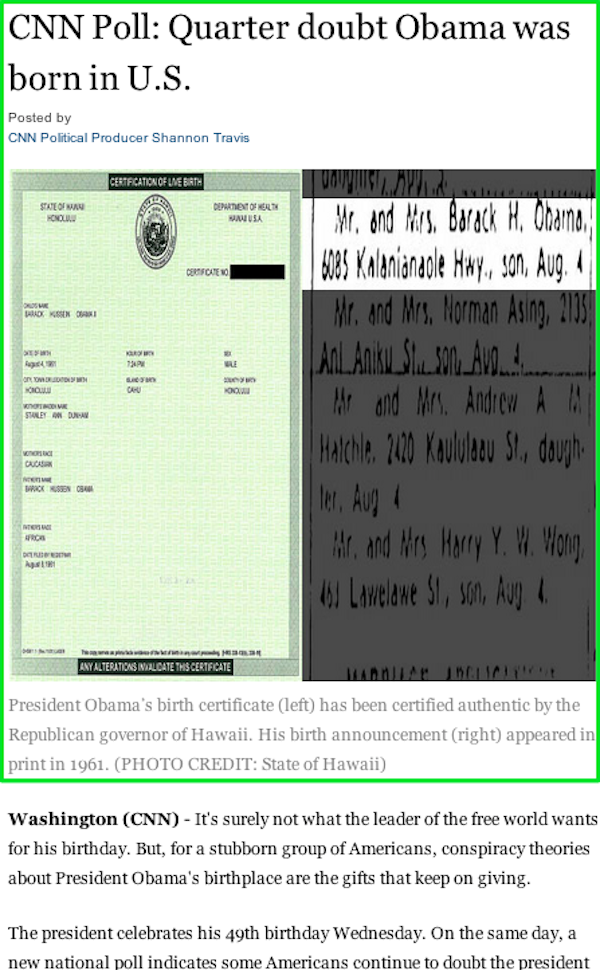
Even if outlets are unwilling to take such dramatic steps, it is still possible to avoid coverage that gives greater attention to false claims than the truth. Unfortunately, news coverage too often fails even this basic test. As I noted back in March, for instance, a Politico report on bogus claims that Obama’s birth certificate was forged repeated those claims at length while burying the truth near the end of the article:
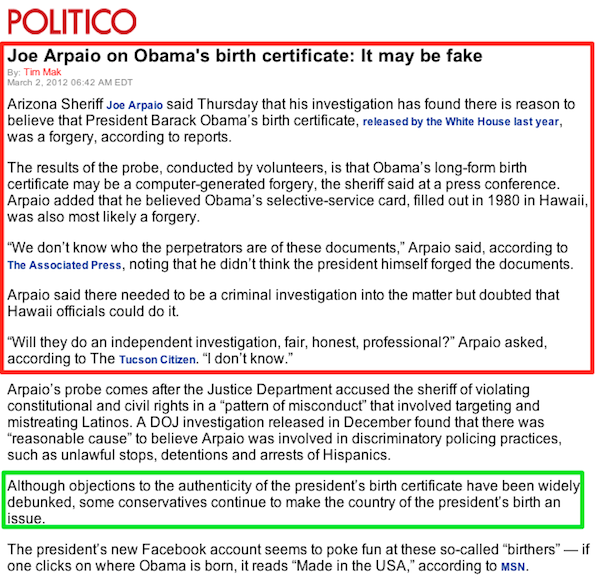
And a McClatchy report in Raleigh’s News & Observer a few weeks ago also prominently featured misstatements by Republican Congressional candidates about Obama’s birth:
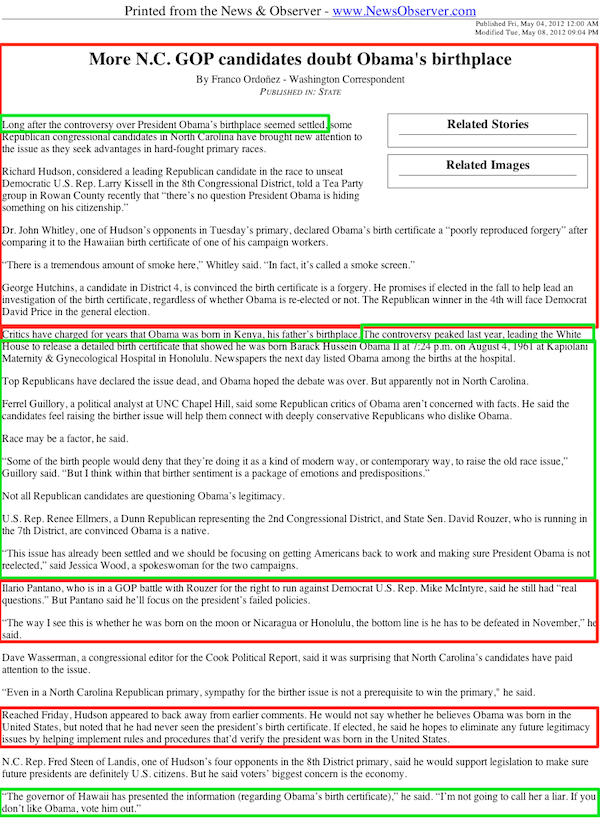
With that context in mind, it’s worth asking how well the media has done in its reporting on the Trump controversy. In addition to Wolf Blitzer’s unusually combative interview with Trump, many journalists deserve credit for minimizing Trump’s charges in their reporting while prominently featuring debunking information—for instance, this report from the Associated Press (image depicts the lede only):
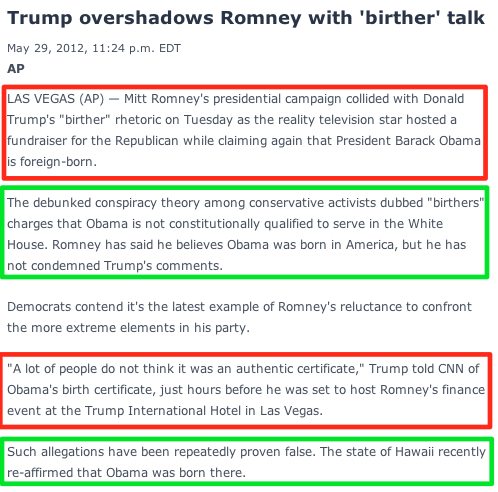
Others, however, were less careful. Most notably, a Detroit Free Press Detroit News story Wednesday on a proposal by GOP Senate candidate Pete Hoekstra to create a panel that would review the qualifications of presidential candidates repeatedly treated Obama’s place of birth as a matter of dispute:
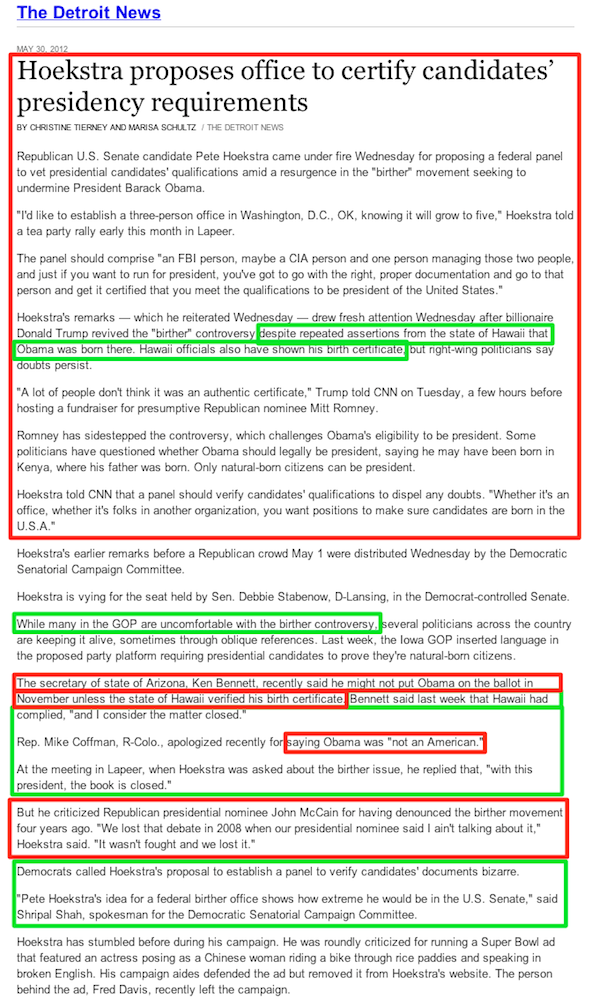
Romney’s unwillingness to disavow Trump has seemingly legitimized further coverage of the birther issue, which had largely been relegated to the fringes of the national debate. If reporters aren’t careful in their approach to this issue, they could inadvertently help to revive an ugly falsehood.
Correction: The text in this post originally stated that the final annotated article was published by the Detroit Free Press. In fact, it was published by The Detroit News. CJR regrets the error.
Brendan Nyhan is an assistant professor of government at Dartmouth College. He blogs at brendan-nyhan.com and tweets @BrendanNyhan.
